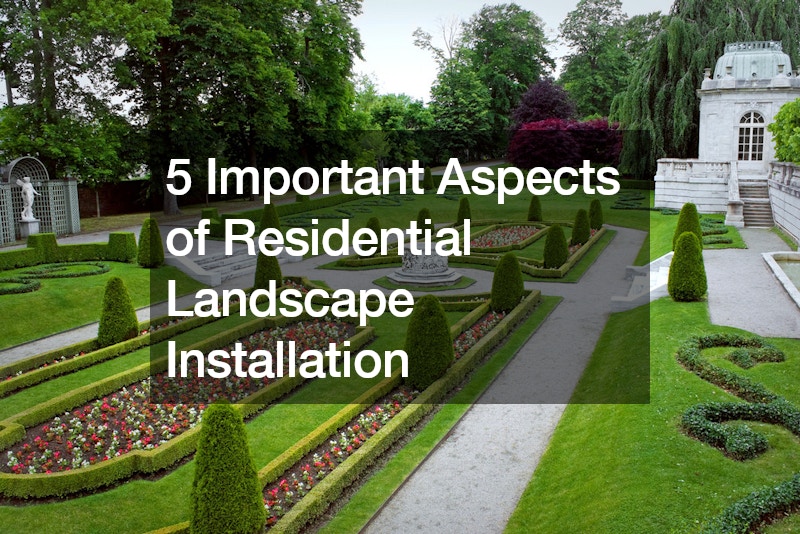A well-designed landscape can significantly enhance the beauty and functionality of your home. Residential landscape installation involves more than just planting trees and shrubs; it requires careful planning and execution to create a harmonious and sustainable outdoor space. Here are five important aspects to consider when undertaking a residential landscape installation.
1. Site Analysis and Planning
The first step in any successful residential landscape installation is a thorough site analysis and planning. This involves evaluating the existing conditions of your property, such as soil quality, drainage patterns, sunlight exposure, and existing vegetation. Understanding these factors is crucial for creating a landscape design that is both aesthetically pleasing and functional. A professional landscape designer will assess these elements and create a detailed plan that takes into account the natural characteristics of your property, your personal preferences, and any specific needs you may have. Proper planning ensures that the installation process runs smoothly and that the final result is cohesive and sustainable.
2. Plant Selection and Placement
Choosing the right plants for your landscape is essential for ensuring long-term health and beauty. Consider the climate, soil type, and the specific conditions of your site when selecting plants. Native plants are often a great choice because they require less maintenance. Consider the size and growth habits of plants to ensure they will fit well in your space as they mature. Proper placement of plants is equally important; it involves considering factors such as sunlight, wind exposure, and water needs. Thoughtful plant selection and placement can create a vibrant and diverse landscape that thrives year-round.
3. Hardscape Elements
Incorporating hardscape elements such as patios, walkways, retaining walls, and water features can add structure and functionality to your landscape. These elements not only enhance the aesthetic appeal but also improve the usability of your outdoor space. When planning hardscape features, consider the materials, style, and layout to ensure they complement the overall design of your landscape. For example, natural stone can create a rustic, timeless look, while modern concrete pavers offer a sleek, contemporary feel. Proper installation of hardscape elements is critical for durability and longevity, so it’s often best to hire professionals for this aspect of the project.
4. Irrigation and Drainage
Effective irrigation and drainage systems are vital components of residential landscape installation. An efficient irrigation system ensures that your plants receive the right amount of water, promoting healthy growth and reducing water waste. Consider installing drip irrigation or soaker hoses, which deliver water directly to the roots and minimize evaporation. Equally important is a well-designed drainage system to prevent waterlogging and soil erosion. Proper grading, the use of French drains, and strategically placed swales can help manage excess water and protect your landscape from damage.
5. Sustainability and Maintenance
Sustainability should be a key consideration in residential landscape installation. Sustainable practices include using native plants, conserving water, and minimizing the use of chemical fertilizers and pesticides. Incorporating composting and mulching can improve soil health and reduce waste. Additionally, consider the long-term maintenance requirements of your landscape. A well-designed landscape should be easy to care for and maintain, allowing you to enjoy your outdoor space without constant upkeep. Planning for sustainability and maintenance from the outset can save time and resources while promoting a healthy, thriving landscape.
Conclusion
Residential landscape installation is a complex process that involves careful planning, thoughtful plant selection, strategic incorporation of hardscape elements, and efficient irrigation and drainage systems. By focusing on these five important aspects, you can create a beautiful, functional, and sustainable outdoor space that enhances the value and enjoyment of your home. Whether you are starting from scratch or renovating an existing landscape, investing in professional expertise and quality materials will ensure a successful and lasting result.
.

